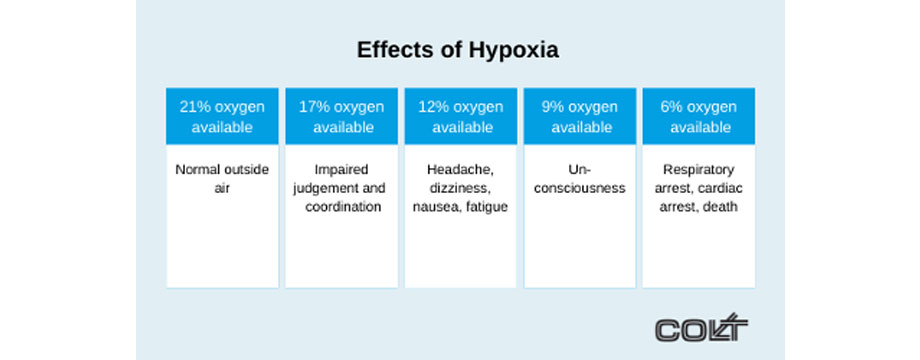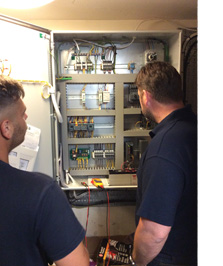The consequences of the failure to maintain smoke ventilation systems can be dire. Fire often grabs more headlines, but smoke is the real killer.
In fact, twice as many people die from smoke inhalation than they do from burns. Often smoke incapacitates so rapidly that victims are unable to make it to an otherwise accessible exit.
In this article, we will outline everything you need to know about smoke ventilation maintenance, including legislation, frequency, smoke ventilation maintenance services and more.
Why consistent smoke ventilation maintenance is so important
Smoke control systems or automatic opening vents (AOVs) are designed to protect people and property. Smoke systems are designed to vent the smoke, heat and fumes that are emitted during a fire.
Smoke system design varies according to the property. However, they are generally placed on roofs and wall spaces that are structurally sound. When heat and smoke detectors are triggered, the vents open automatically, keeping the smoke buoyant and moving out of the building.
It is vital that smoke is efficiently removed from buildings for the following reasons:
1. Smoke is comprised of components that can be lethal if inhaled. These components include:
• Particles of burnt and partially burnt substances that can bypass the respiratory system’s defences and enter the lungs.
• Toxic gases such as carbon monoxide which can be deadly even in
small quantities.
• Vapours that are poisonous if inhaled.
2. Fire can reduce oxygen levels in two ways. The first, by consuming the oxygen and the second, by displacing the oxygen with other gases, this is called Hypoxia.

3. Whilst smoke systems are principally classified as life safety systems, they also and crucially facilitate firefighting which becomes more dangerous and difficult in a smoke-logged building.
Smoke ventilation system maintenance and the law
For life safety equipment such as smoke control systems, building owners must ensure that it is maintained in an efficient state, in efficient working order and in good repair.
This is required by the Regulatory Reform (Fire Safety) Order 2005 (RRO).
The Department of Communities and Local Government suggests that the “smoke control system should be maintained by a competent person who is familiar with the fire engineering performance specifications of that specific system”.
Also, under the Regulatory Reform (Fire Safety) Order 2005, the responsible person must always keep an accurate record. In the event of a fire, these records may be requested in certain circumstances - for example, to make an insurance claim.
What can go wrong with your smoke ventilation system?
There are several things that can be done incorrectly and/or go wrong with your smoke control system, which is why regular checks and maintenance from a specialist is so important.
These issues could be due to the poor installation of equipment, misuse of smoke equipment by tenants, incorrect advice and lack of knowledge from unqualified maintenance contractors and more. Some of the most common issues we come across include, but are not limited to:
• Poor initial installation of equipment
• Lack of testing/maintenance and/or no record
• Inappropriate operation setup
• System disconnected or not reset after fault or activation
• Inappropriate equipment, e.g. non-fire rated cables.
• Batteries well past shelf life
• Improper use of equipment, e.g. smoke extract used for day-to-day ventilation.
• Repairs not always taken up by customers.
• Recommendations of battery changes and basic maintenance not taken up.
• Misuse of smoke equipment by tenants, e.g. fire alarm disconnected, smoke detectors removed, smoke ventilators forced open.
• Incorrect advice from unqualified maintenance contractors.
• Confusing a smoke test with a service. A successful smoke test will show that your system is working now, but there may be elements within it that are not functioning properly, or are reaching the end of their life. Regular servicing is essential.
 Getting contractors to perform smoke ventilation maintenance services
Getting contractors to perform smoke ventilation maintenance services
The BS 7346-8 recommends that you get your smoke ventilation system checked once per year by a knowledgeable engineer. It is your responsibility to check that the companies you are employing to do the maintenance have the qualifications, accreditations and training practices in place to work in accordance with the regulations.
Colt was the first UK company to be certified to both IFC SDI 19 and SDI 05. This demonstrates not only our competency in fire strategy, scheme design and installation but also our high standards of servicing.
Routine maintenance can extend the life of a product and reduce the likelihood of down-time. Such a programme may also permit the equipment to be updated in line with the latest technological advances and standards.
To ensure that your smoke control systems are following the latest maintenance regulations, speak to a Colt service specialist today by emailing
service@uk.coltgroup.com or calling 02392491735.
- Log in to post comments















